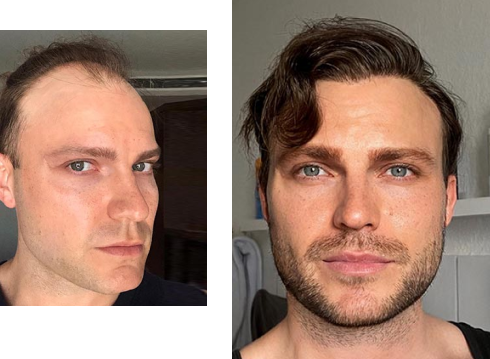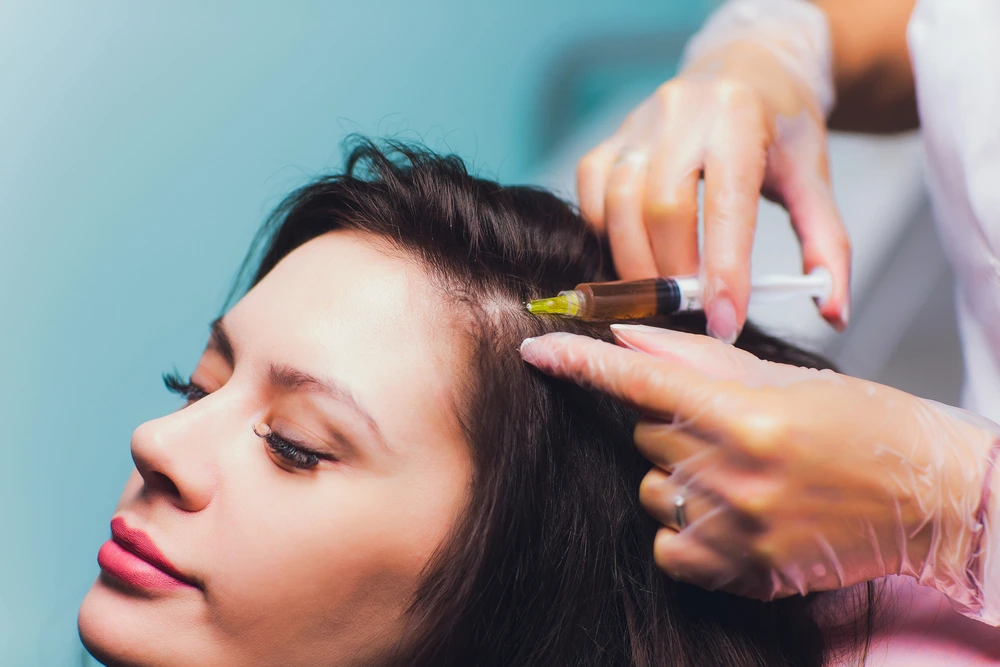
Hair loss can be a distressing experience for both men and women, impacting self-esteem and overall well-being. However, thanks to advancements in medical technology, hair transplant procedures offer a reliable and effective solution. Among the various techniques available, Follicular Unit Extraction (FUE) has gained significant popularity due to its minimally invasive nature and natural-looking results. In this blog, we will delve into the details of the FUE technique for hair transplant, including the operation process and post-operative care tips.
Understanding FUE Hair Transplantation: FUE, also known as follicular transfer, is a state-of-the-art hair transplant technique that involves the extraction of individual hair follicles from a donor area and their careful implantation into the recipient area. Unlike the traditional strip harvesting method, FUE leaves no linear scars, making it an ideal choice for individuals who prefer short hairstyles or have a limited donor area.
Operation Process:
Post-Operative Care Tips:
Hair loss can be a distressing experience, affecting one's self-esteem and overall appearance. Fortunately, advancements in hair transplant techniques have provided effective solutions for individuals seeking to restore their hair. The Direct Hair Implantation (DHI) method, a revolutionary approach in hair transplantation, offers natural-looking results with minimal discomfort and downtime. In this blog, we will explore the details of the DHI method, including the operation process and post-operative care tips.
Understanding the DHI Method for Hair Transplantation: The DHI method is a cutting-edge hair transplant technique that enhances the precision and efficiency of hair follicle implantation. It builds upon the principles of the Follicular Unit Extraction (FUE) method, with the key difference lying in the implantation phase. In DHI, specialized tools, known as Choi pens, are utilized to extract and implant hair follicles simultaneously, ensuring minimal handling and optimal placement.
Operation Process:
Post-Operative Care Tips:

We help our patients with our VIP vehicles for their safety and comfort. We have a team of translators so that you do not experiCONTINUOUS DOCTOR CHECKence any communication problems.
Consultations are conducted by Dr.Muhsin and his team of Specialists. Operations are also performed by stretchers.

While your treatment is in progress, you can visit Istanbul in the company of a VIP vehicle and driver and collect wonderful memories.
When your treatment is completed, Dr. Muhsin will perform the final checks. You will be transferred to the airport with your VIP vehicle again.

A well-groomed beard has long been associated with masculinity, confidence, and style. However, not everyone is blessed with a naturally thick and full beard. For those desiring a more robust facial hair growth, beard transplant procedures offer a viable solution. In this comprehensive guide, we will delve into the details of beard transplants, including the procedure itself, considerations for candidacy, and post-operative care tips.
Understanding Beard Transplants: Beard transplant is a surgical procedure that involves the transplantation of hair follicles from the donor area (typically the back of the scalp) to the beard region. The procedure utilizes the principles of hair transplantation, such as the Follicular Unit Extraction (FUE) or the Direct Hair Implantation (DHI) method, to achieve a fuller and more aesthetically pleasing beard.
Candidacy and Consultation: Before considering a beard transplant, it is crucial to consult with a qualified hair transplant surgeon who specializes in facial hair restoration. During the consultation, the surgeon will evaluate various factors, including:
Procedure Details:
Post-Operative Care Tips:
Eyebrow Transplant
Well-defined and properly shaped eyebrows can significantly enhance the beauty and symmetry of the face. Unfortunately, not everyone is naturally blessed with thick or well-formed eyebrows. Eyebrow transplant procedures offer a solution for those seeking to enhance their eyebrow appearance. In this comprehensive guide, we will explore the details of eyebrow transplants, including the procedure itself, considerations for candidacy, and post-operative care tips.
Understanding Eyebrow Transplants: Eyebrow transplant is a surgical procedure that involves the transplantation of hair follicles from the donor area to the eyebrow region. The procedure utilizes the principles of hair transplantation, such as the Follicular Unit Extraction (FUE) or the Direct Hair Implantation (DHI) method, to restore and enhance eyebrow density, shape, and symmetry.
Candidacy and Consultation: Before considering an eyebrow transplant, it is crucial to consult with a qualified hair transplant surgeon who specializes in eyebrow restoration. During the consultation, the surgeon will evaluate various factors, including:
Procedure Details:
Post-Operative Care Tips:

PRP and Mesotherapy for Hair Loss
Hair loss can be a distressing experience, impacting one's self-confidence and overall appearance. Thankfully, modern advancements in medical aesthetics have introduced effective treatments for hair loss, such as Platelet-Rich Plasma (PRP) therapy and Mesotherapy. In this article, we will delve into the details of PRP and Mesotherapy as non-surgical approaches to combat hair loss, explaining the procedures, benefits, and potential outcomes.
Understanding PRP Therapy: Platelet-Rich Plasma (PRP) therapy is a regenerative treatment that utilizes the body's own healing properties to stimulate hair growth. The procedure involves extracting a small amount of the patient's blood, processing it to concentrate the platelets, and then injecting the platelet-rich solution directly into the scalp.
How PRP Therapy Works:
Benefits of PRP Therapy:
Understanding Mesotherapy: Mesotherapy is a technique that involves the injection of a customized mixture of vitamins, minerals, amino acids, and other essential nutrients directly into the scalp. The goal is to nourish the hair follicles, improve scalp health, and stimulate hair growth.
How Mesotherapy Works:
Benefits of Mesotherapy:
Potential Outcomes and Considerations: Both PRP therapy and Mesotherapy have shown promising results in promoting hair growth and improving the overall quality of hair. However, it's important to note that individual results may vary, and multiple sessions may be required to achieve optimal outcomes. Additionally, these treatments may be more effective for certain types of hair loss, such as androgenic alopecia, than others.
PRP therapy and Mesotherapy are non-surgical treatments that offer hope to individuals experiencing hair loss. By harnessing the power of the body's natural healing processes and providing essential nutrients to the scalp, these treatments can stimulate hair growth, improve hair density, and enhance overall scalp health. If you are considering PRP therapy or Mesotherapy, consult with a qualified medical professional specializing in hair restoration to determine the most suitable treatment approach for your specific needs
Dr.Muhsin Clinic & Wellness experts are with you in all processes to reach the right solution.
We will be happy to welcome you in our renovated luxury clinic for VIP health services.
Please fill out the form to receive premium service from our experts.